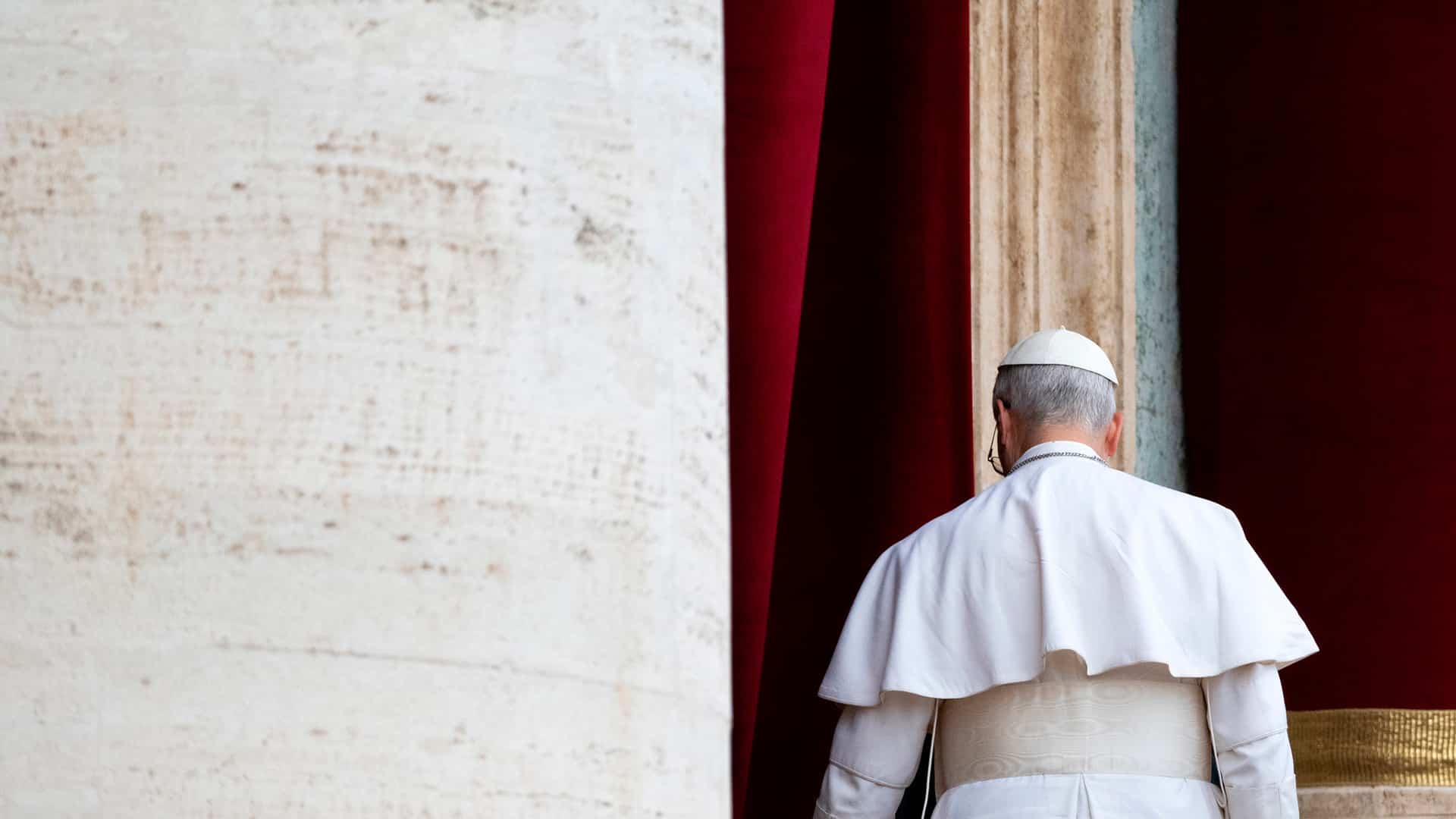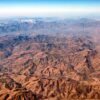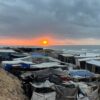The newly appointed Leo XIV is said to be a pope of continuity. This characterisation will no doubt soon be tested in his positions towards the Israeli-Palestinian conflict. From the ongoing Israeli genocide in Gaza to the annexation of Palestinian land and the status of Jerusalem and its holy sites, the Holy See should be concerned about the overall future of the region in general, and of the Christian presence in particular. Whether Pope Leo XIV will continue to put Gaza at the centre of his agenda is an important question. Taking a different approach may erode part of the legitimacy gained by the Roman Catholic Church in the Global South, and the Arab World in particular due to its solidarity with the Palestinian people in Gaza, and particularly the personal care and interest of Pope Francis towards the Palestinian Christian population, the oldest Christian communities in the world.
The concept of justice was central to Francis’s foreign policy. He repeated insistently that there would not be peace without justice, something that Palestinians understood very well as part of the social doctrine of the Church.
1. Historical background
Since the 19th century, with the re-establishment of the Latin Patriarchate of Jerusalem, the Holy See heavily invested in building an important Roman Catholic presence in Palestine, mainly at the expense of the Orthodox Church. Its network of institutions, including several health and educational centres, provided the Roman Catholic community with a certain prominence in Palestinian society. Therefore, the Holy See was also aware of the concerns that Palestinian Christians had over the Zionist project in Palestine and how it could affect their future.
This is an important element to understand why the Holy See had opposed the Zionist project in Palestine and the Balfour Declaration,[1] just as it had initially lobbied against the partition of Palestine,[2] fearing what it would mean for the Catholic communities in the region as well as for the Status Quo of the Holy Sites.[3] The Status Quo, as reaffirmed in the Berlin Treaty of 1878, signed between European powers and the Ottoman Empire, established the modes of administration of the Holy Sites. The consequences of the creation of Israel in 1948, known by the Palestinians as al-Nakba or ‘the catastrophe’, ended up confirming their fears: dozens of parishes were closed, almost 70% of the Palestinian Christians became refugees and the percentage of Christians in Palestine fell from around 11% to less than 3% within a year.
The failure to prevent the Nakba forced the Roman Catholic Church to focus more on humanitarian matters than on the political aspect of the Question of Palestine. It served an important role in taking care of Palestinian refugees,[4] including through the Pontifical Mission, and demanded the respect of the Status Quo of the Holy Sites, a cause that found the support of Belgian, French, Italian and Spanish diplomacy in their capacity as ‘Catholic countries’, responsible for the implementation of Catholic rights in accordance with the Status Quo regulations.
Pope Paul VI visited Jordan and Palestine in 1964, the first papal visit after the Nakba, and made an explicit call a decade later for Israel to ‘recognise the rights and legitimate aspirations’ of the Palestinian people; Pope John Paul II strengthened relations between the Holy See and the PLO, including by granting the first audience to the PLO’s leader Yasser Arafat in the Vatican in 1982, as the organisation departed from Lebanon. It was in this context that leaders, Arafat and the Pope were informed of the Palestinian refugee camps of Sabra and Shatila,[5] something that made Pope John Paul II emphasise the need to achieve a solution to the Question of Palestine, shown by the prominence it was given by Vatican diplomacy.
Yasser Arafat considered relations with the Holy See to be of great importance, visiting Pope John Paul II on several occasions. His advisers Nabil Shaath and Afif Safieh –the latter Palestine’s first ambassador to the Holy See– argue that Arafat trusted the Pope in his insistence on developing a ‘peace diplomacy’,[6] seeking his help to achieve a diplomatic solution for Palestine. This was reflected in the historical pilgrimage of John Paul II to Palestine in 2000, when he called for an independent Palestinian state, reaffirming Palestinian indigeneity: ‘Probably the pastors and shepherds of Bethlehem were your predecessors, your ancestors’, he said to Palestinian refugees at Dheisheh Refugee Camp.[7]
The end of the Papacy of John Paul II distanced the Vatican from the Middle East. Pope Benedict did not show the same proximity to the Palestinian people. Having been born and raised under Nazi rule made the German Pope extremely careful about his foreign policy towards the region. Nevertheless, he supported the Palestinian campaign for statehood in the UN in 2011 and made a firm statement in favour of a sovereign Palestinian state during his pilgrimage to Bethlehem in 2009.[8]
It did not take much time for Pope Francis to make Palestinians feel they had a friend in the Holy See. During his first Easter homily as Pope, in 2013, he spoke of the need to achieve peace in the Middle East, making clear that this was not going to be a marginal issue during his papacy. As an Argentine, he knew the importance of Vatican diplomacy from the Beagle Crisis that prevented a war between Argentina and Chile in 1978. While the politics of Israel-Palestine are significantly different from those of South America, Pope Francis tried to provide gestures that would pave the way for a political solution in the Middle East.
The concept of justice was central to Francis’s foreign policy. He repeated insistently that there would not be peace without justice, something that Palestinians understood very well as part of the social doctrine of the Church. It reaffirmed the principles upon which John Paul II appointed the first Palestinian Latin Patriarch of Jerusalem, Michael Sabbah, at the beginning of the First Intifada, prioritising a Church close to the struggle of its people against injustice, just like John Paul II participated in the Polish struggle against Soviet control.[9]
As a Pope who avoided protocol, it was clear that during his pilgrimage in 2014 he was going to make an important gesture to Palestinian Christians, and he did so at one of the most painful places for Christianity: at the Annexation Wall built by Israel in the heart of Bethlehem. There he prayed, surrounded by Muslim children from the Aida Refugee Camp, bringing international attention to the reality of Bethlehem under Israeli occupation. Later on, during the service offered at the Nativity Square, he demanded an independent Palestine, but his tone was moderate: during the visit he tried to make use of two friends he brought from Argentina, a Rabbi and an Imam, to send a message of interfaith dialogue. This effort to seek equality between Israelis and Palestinians was undermined by the Israeli insistence on dismissing his call to end the Israeli occupation as a form of ‘antisemitism’. Pope Francis continued trying, and the visits of Jewish groups to the Holy See multiplied over the years.
Then in 2015 the Holy See recognised the State of Palestine. The announcement was significant as it used as a reference the 1967 borders, including East Jerusalem. The Holy See’s emphasis once again on international law in peace-making was not well-received by Israel. The recognition of Palestine aimed at bringing broader Western support for a political solution. It came after an invitation made to President Mahmoud Abbas and the Israeli President Shimon Peres to pray for peace in the Vatican, an event that took place and included planting a tree at the Holy See.[10] It sent a strong political message: he invited Peres, known for his involvement in the Oslo Agreement, rather than the Israeli Prime Minister Benjamin Netanyahu, known for his hawkish positions against Palestinian independence. These efforts made little progress given Peres’s limited political power and reluctance to challenge Netanyahu during his mandate as Israel’s President. These efforts were made in coordination with the Obama Administration, which in 2014-15 tried to revitalise the Middle East Peace Process, without positive results.
In parallel, Pope Francis became a moral authority who facilitated other diplomatic processes, including between the US and Cuba when they reopened diplomatic relations in 2014.[11] He travelled to more Arab countries than any other Pope. He visited Mosul after the defeat of Daesh, celebrating the return of the Iraqi people to the city, including its ancient Christian community. Likewise, he initiated a dialogue with Al Azhar University, centre of learning of the Sunni world, in Cairo, and expressed his solidarity with the Christians and Muslims in Iraq, Jordan, Egypt, Morocco and the United Arab Emirates, becoming the first Pope to ever visit the Arabian Peninsula. He also kept a strong relationship with Lebanon, though he never visited the country as Pope.
Pope Francis developed a close relationship with the Latin Patriarch of Jerusalem, Pierbatista Pizzaballa, appointing him cardinal and demonstrating the importance he gave to the role of the Church in Palestine, something that became more evident after the brutal attacks conducted by Hamas against Israel on 7 October and the genocidal war initiated since then by Israel against the Palestinian people in Gaza.
Pope Francis showed compassion for all victims and received relatives of Israeli captives and of Palestinians from Gaza, but perhaps, one of the most memorable gestures from the Pope, that touched profoundly the Palestinian Christian community were his daily calls to the Holy Family Latin Church of Gaza. There he was updated about what was taking place in Gaza, including the lack of food and how Gaza City was being targeted. When a mother and her daughter, both Christians, were killed by an Israeli sniper inside the Church complex, Pope Francis referred to the act as one of ‘terrorism’,[12] a term he repeatedly used in attacks against civilians.
When the evidence of genocide began to mount, Pope Francis was the first Western leader calling for an investigation. When his medical condition deteriorated, he did not stop checking on the Gaza parish, where he already knew the names of the priests, nuns and some of the people taking refuge there. For his last birthday, an improvised chorus of Palestinian Christian children sang Happy birthday in Spanish and Arabic for him.
The Latin Patriarch of Jerusalem, when announcing the death of Pope Francis on Easter Monday, said ‘Gaza was one of the symbols of his pontificate’. The Holy See diplomacy presented an unprecedented approach during his pontificate, that even though it did not succeed in celebrating peace in the Middle East, brought the required international attention to the current catastrophe. Today Palestinians feel a bit lonelier with the departure of the Pope that called Gaza every day at 8:00pm, bringing some hope in the midst of an ongoing genocide.
2. What can be expected from Pope Leo XIV?
Pope Leo XIV represents the continuation of the simplicity brought by Pope Francis to the Holy See. However, an important difference is that his background does not include any major engagement with the Middle East. The Augustinians, his religious order, lack any significant presence in the Arab World. Nevertheless, he is someone highly identified with the social doctrine of the Church and a strong advocate of human rights.
While it has been reported that he is a registered member of the Republican Party in the US, he has publicly opposed President Trump’s approach on immigration. If he is identified with the traditional policies of the Republican Party, he certainly belongs to the camp of James Baker, who made the Middle East Peace Process possible based on assurances regarding the illegality of Israeli settlements and opposing the Israeli annexation of Jerusalem, rather than to the evangelical approach of President Trump’s Ambassador Mike Huckabee, who tours the occupied West Bank using the Bible to justify war crimes against the Palestinian people.
Pope Leo XIV steps into his role at a time when the conflict in historical Palestine is intensifying and has reached levels of violence and destruction rarely seen in History. The Israeli government has already announced a plan of prolonged occupation of Gaza, something that will undoubtedly threaten the continuation of the Christian presence in Gaza City. This is also a moment when global leaders have proved to be distinctly unwilling and incapable of stopping the ongoing catastrophe in Palestine. Therefore, the Pope’s moral leadership will be crucial. Besieged families in Gaza will be sitting close to a telephone awaiting a call from the Vatican every 8:00pm.
[1] Livia Rokah (1987), The Catholic Church and the Question of Palestine, Saqi Books, London.
[2] For the Holy See at the moment, extending the Mandate would have met their interests better than the partition of Palestine. See more in Paolo Zanini (2017), ‘Vatican diplomacy and Palestine, 1900-1950’, Jerusalem Quarterly, nr 71, Autumn, p. 120-131.
[3] Silvio Ferrari (1984), ‘The Holy See and the postwar Palestine issue: the Internationalization of Jerusalem and the protection of the Holy Places’, International Affairs, vol. 60, nr 2, Spring, p. 262.
[4] Maria Chiara Rioli (2020), A Liminal Church: Refugees, Conversions and the Latin Diocese of Jerusalem, 1946-1956, Brill, Leiden.
[5] Interview with Nabil Shaath.
[6] Afif Safieh (2010), The Peace Process: from Breakthrough to Breakdown, Saqi Books, London.
[7] Visit to the Refugee Deheisheh Camp (March 22, 2000) | John Paul II.
[8] In Bethlehem, Pope Benedict XVI makes strongest call yet for a Palestinian homeland | Pope Benedict XVI | The Guardian.
[9] Interview with Patriarch Michael Sabbah.
[10] Mahmoud Abbas, Shimon Peres pray with Pope Francis for Mideast peace | CNN.
[11] Pope Francis and the Vatican played key roles in US-Cuba thaw, leaders reveal | Pope Francis | The Guardian.
[12] Pope condemns attacks on civilians in Gaza: ‘It is war; it is terrorism’ – Vatican News.



